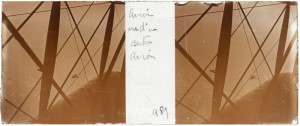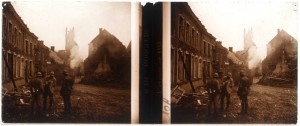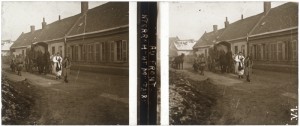The Paul Jean Gaston Darrot papers (MS 591) consist of 210 photographic prints and 100 stereoscopic glass slides made during World War I.Together they provide a rich and fascinating look into military life in France during the war.



 Born in 1892, Darrot studied art before joining the army in 1912. During the war he served in the infantry, the artillery, and the communications section of the engineers. Most of the photographs in the collection were probably made while Darrot was with the engineers.
Born in 1892, Darrot studied art before joining the army in 1912. During the war he served in the infantry, the artillery, and the communications section of the engineers. Most of the photographs in the collection were probably made while Darrot was with the engineers.
After the war, Darrot moved to the United States, where he worked for the Seth Thomas Clock Company in New York. Drawing on his photograph collection, he gave lectures to various audiences about his experiences during the war.
Darrot’s stereoscopic slides are particularly noteworthy, both for the range of subjects they cover and for the type of object they are. Stereographs show two images of the same scene that, when looked at through a special viewer, appear to merge into a single three dimensional image. Many stereographs were printed on cards, but Darrot’s are on glass, which makes them particularly fragile.
In order to make the content of the slides available to the public, and at the same time reduce the amount of handling the physical slides are subject to, we have just completed a project to digitize all one hundred slides in the Darrot papers. These are being added to the Manuscripts and Archives Image Database (MADID) and can be viewed as a group by following this link (or by searching the database for the keyword “Darrot”). For more information on the Darrot papers as a whole, see the online finding aid.



